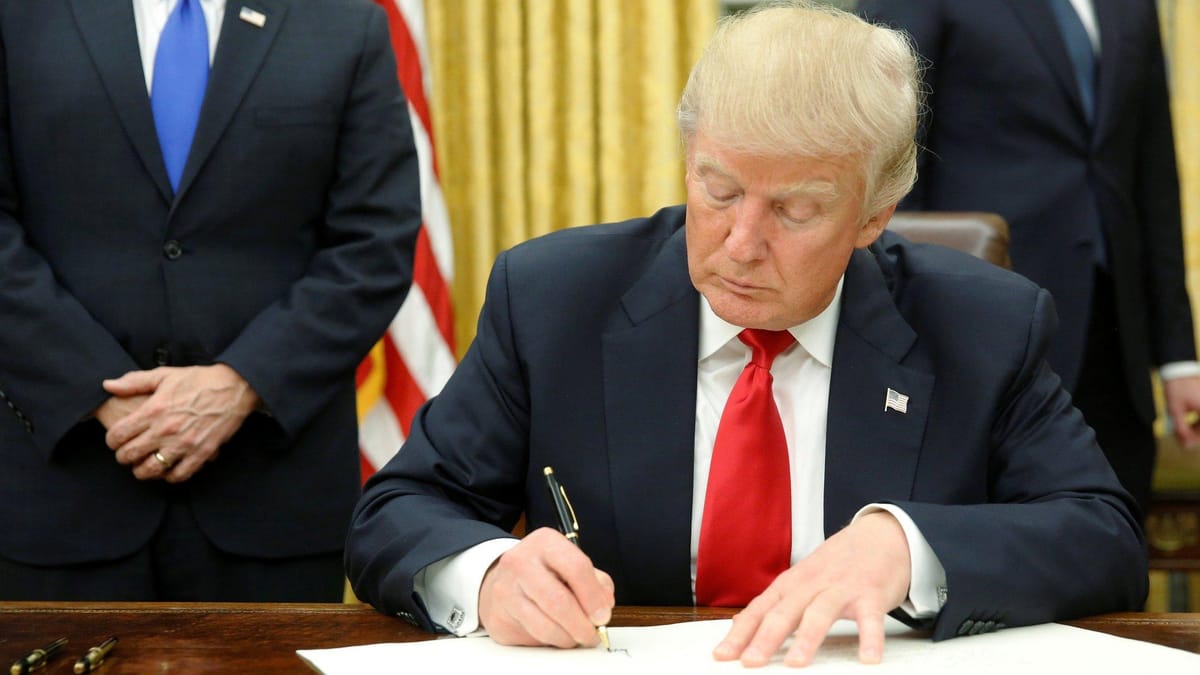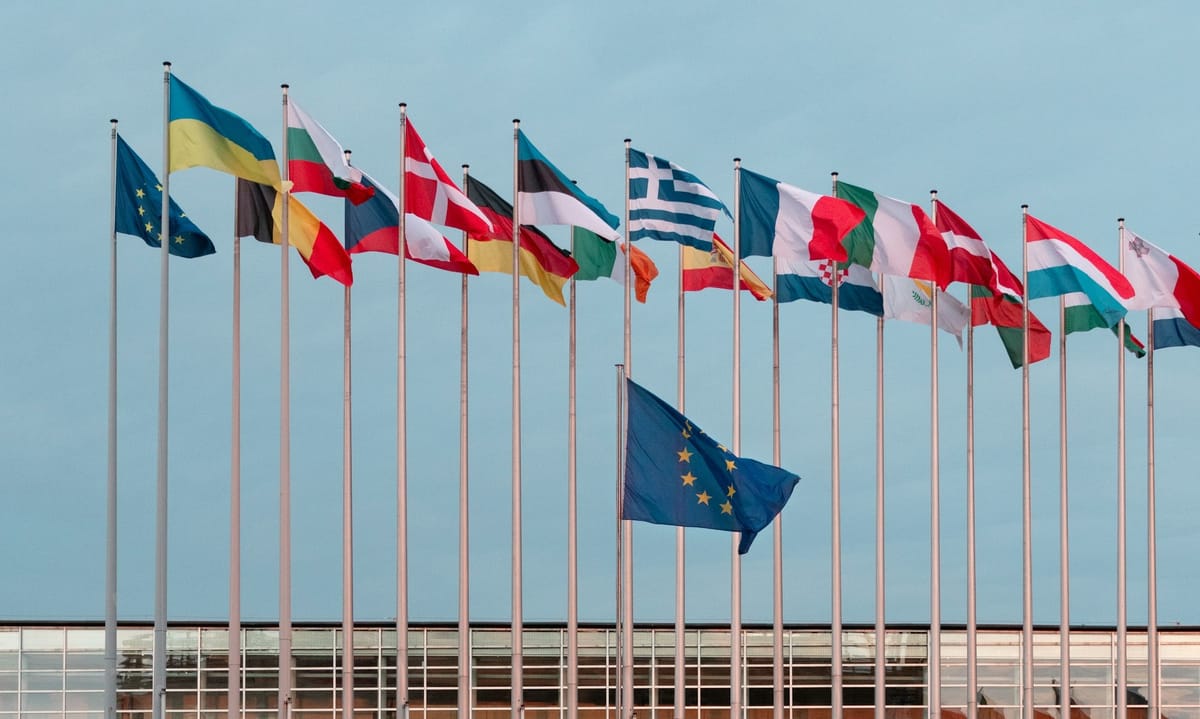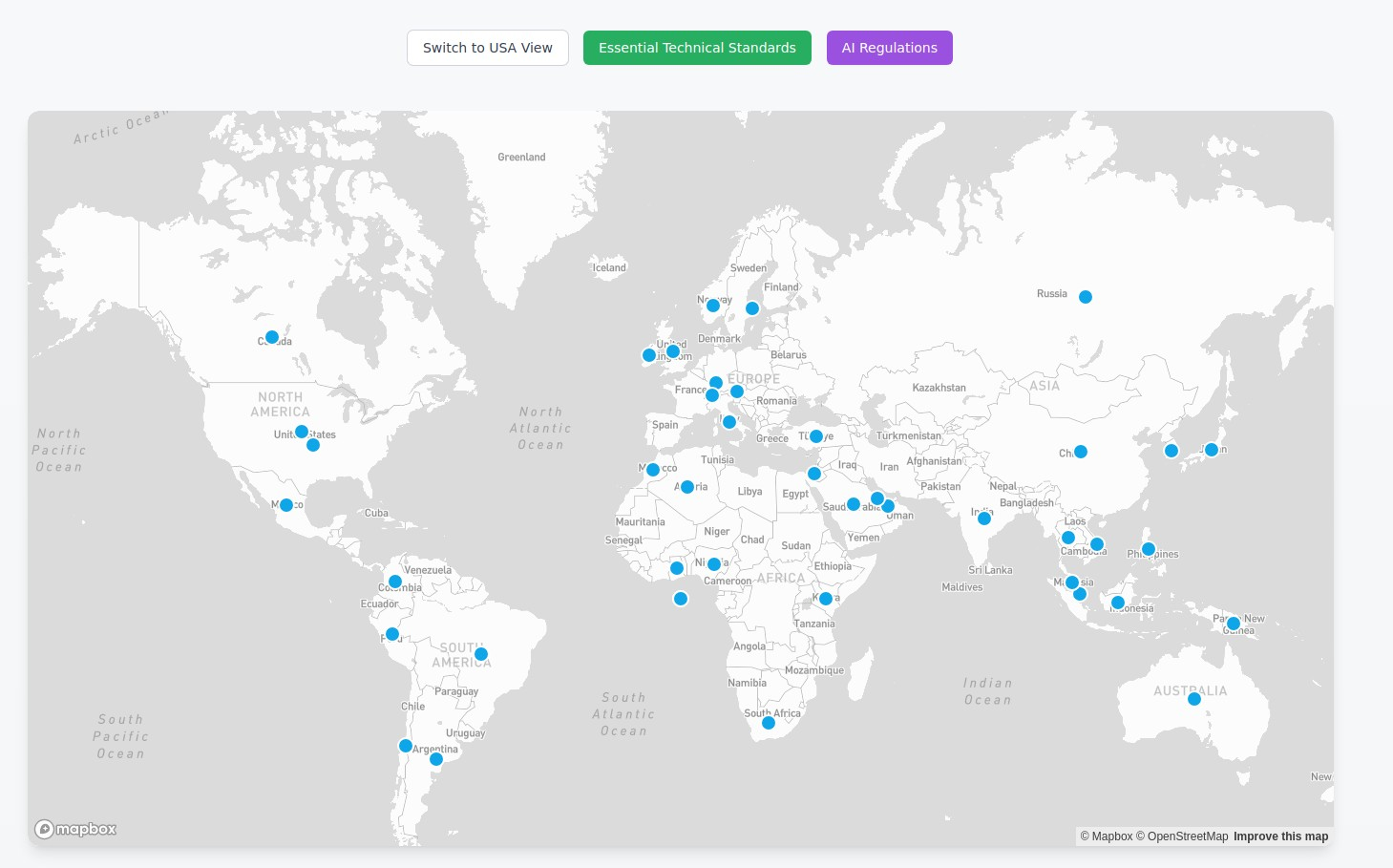Trump's AI and Cybersecurity Executive Orders: Reshaping Federal Technology Policy in 2025

President Donald Trump has made significant moves to reshape federal technology policy through a series of major executive orders in 2025, fundamentally altering the government's approach to artificial intelligence development and cybersecurity priorities. These orders represent a dramatic pivot from the previous administration's policies and signal a new era of AI governance focused on American leadership, technological sovereignty, and what the administration explicitly calls the elimination of "woke AI" from federal operations.
The most recent development came yesterday, July 23, 2025, when President Trump signed his most comprehensive order yet, directly targeting "woke AI" in federal government procurement and establishing specific standards for ideological neutrality in artificial intelligence systems.
The AI Executive Order: "Removing Barriers to American Leadership in Artificial Intelligence"
On January 23, 2025, President Trump signed Executive Order 14179, titled "Removing Barriers to American Leadership in Artificial Intelligence," marking one of his first major policy initiatives of his second term. This order directly targets what the administration characterizes as ideological constraints on AI development while prioritizing American technological dominance.
Core Policy Objectives
The executive order establishes a clear policy framework centered on maintaining and enhancing America's global AI dominance. The order explicitly states its intent to develop AI systems that are "free from ideological bias or engineered social agendas," a direct response to concerns about politically motivated constraints on AI development.
The administration's approach represents a significant departure from the Biden-era Executive Order 14110, which focused heavily on AI safety, risk management, and ethical considerations. Trump's order specifically revokes the previous administration's comprehensive AI framework, arguing that existing policies created barriers to American innovation.
The "Woke AI" Challenge
While the executive order doesn't explicitly use the term "woke AI," the language clearly targets what conservative critics have characterized as left-leaning bias in large language models and AI systems. The order's emphasis on eliminating "ideological bias" and "engineered social agendas" directly addresses concerns that AI systems have been programmed with progressive viewpoints that could influence their outputs and decision-making processes.
This represents a broader cultural and political battle over AI development, with the Trump administration positioning itself as defending free speech and objective AI development against what it views as politically motivated censorship and bias injection in AI systems.
Implementation Framework
The order establishes a comprehensive implementation structure requiring multiple federal agencies to coordinate on AI policy reform. The Assistant to the President for Science and Technology, the Special Advisor for AI and Crypto, and the Assistant to the President for National Security Affairs are tasked with developing an AI Action Plan within 180 days.
This action plan must address three core areas: promoting human flourishing, enhancing economic competitiveness, and strengthening national security. The order also requires immediate review of all policies stemming from the previous administration's AI framework, with agencies directed to suspend, revise, or rescind any actions that conflict with the new policy direction.

Economic and Innovation Implications
The executive order positions AI development as a critical component of American economic competitiveness. By removing what the administration characterizes as regulatory barriers, the order aims to accelerate AI innovation in the private sector and maintain America's technological edge over international competitors, particularly China.
The emphasis on free market principles and entrepreneurial spirit reflects the administration's broader economic philosophy, suggesting that reduced government oversight will lead to more rapid AI advancement and deployment across various sectors of the economy.
The Cybersecurity Executive Order: Refocusing on Core Security Threats
On June 6, 2025, President Trump signed a cybersecurity executive order titled "Sustaining Select Efforts to Strengthen the Nation's Cybersecurity," which fundamentally restructures federal cybersecurity priorities and eliminates several Biden-era initiatives.
Elimination of Previous Programs
The cybersecurity order takes a particularly aggressive stance toward dismantling previous administration policies. It specifically targets what the Trump administration characterizes as "problematic and distracting issues" that were allegedly introduced into cybersecurity policy just before the transition.
Key eliminated programs include digital identity mandates for immigrants, which the administration argued could facilitate fraud and improper access to public benefits. The order also removes what it describes as "burdensome software accounting processes" that prioritized compliance over genuine security improvements.

AI-Cybersecurity Integration
A significant component of the cybersecurity order involves refocusing AI cybersecurity efforts. Rather than what the administration characterizes as "censorship-focused" AI policies, the new approach emphasizes using AI to identify and manage actual security vulnerabilities.
This represents a more technical and less politically oriented approach to AI in cybersecurity contexts, focusing on practical threat detection and response capabilities rather than content moderation or bias mitigation efforts.
Border Gateway and Post-Quantum Security
The order addresses critical technical cybersecurity challenges, including border gateway security to prevent network hijacking and the implementation of post-quantum cryptography to protect against emerging computational threats. These initiatives represent genuine technological challenges that require sophisticated technical responses rather than policy-focused approaches.
The emphasis on adopting the latest encryption protocols and developing machine-readable policy standards demonstrates the administration's focus on concrete technical measures rather than broad regulatory frameworks.

International Focus and Sanctions Reform
The cybersecurity order clarifies that cyber sanctions will be limited to foreign malicious actors, explicitly preventing their use against domestic political opponents. This represents a significant policy clarification that addresses concerns about the potential misuse of cybersecurity authorities for political purposes.
The order also clarifies that sanctions do not apply to election-related activities, though this provision has generated significant debate about the appropriate scope of cybersecurity enforcement in democratic contexts.
Transparency and Accountability Measures
Both executive orders incorporate transparency elements, though they approach the concept differently than previous administrations. The AI order requires comprehensive reporting and review processes, with regular assessments of how federal agencies are implementing the new policy framework.
The cybersecurity order emphasizes technical transparency through machine-readable policy standards and formal trust designations for Internet of Things devices. This approach focuses on providing clear technical specifications rather than broader policy transparency initiatives.
Federal Agency Coordination
Both orders establish complex inter-agency coordination requirements, recognizing that AI and cybersecurity issues cut across traditional governmental boundaries. The AI order requires coordination between science and technology advisors, national security officials, and economic policy teams, while the cybersecurity order involves defense, homeland security, and intelligence agencies.
This coordination structure reflects the administration's recognition that technology policy requires sophisticated governmental responses that integrate multiple areas of expertise and authority.
Industry and Academic Response
The executive orders have generated mixed responses from industry and academic stakeholders. Technology companies have generally welcomed the reduced regulatory burden and emphasis on innovation, while expressing concerns about the elimination of safety-focused frameworks.
Academic institutions and civil society organizations have raised questions about the potential risks of reduced AI safety oversight and the implications of eliminating bias mitigation efforts in AI development.

International Implications
The executive orders position the United States in direct competition with other nations, particularly China, for AI and cybersecurity leadership. The emphasis on American technological dominance reflects broader geopolitical concerns about maintaining technological sovereignty in critical emerging technologies.
The orders also signal to international partners and competitors that the United States intends to pursue a more aggressive and less constrained approach to AI development, potentially affecting international cooperation on AI governance and cybersecurity initiatives.

The Latest Development: Federal AI Procurement Order (July 23, 2025)
Yesterday, President Trump signed his most explicit and comprehensive executive order targeting what the administration directly labels as "woke AI" in federal government operations. This order, titled "Preventing Woke AI in the Federal Government," represents the culmination of the administration's AI policy evolution and provides the most concrete implementation framework yet seen.
Unbiased AI Principles Framework
The July 23rd order establishes specific "Unbiased AI Principles" that all federal AI procurement must follow. These principles are defined with unprecedented specificity:
Truth-seeking: Large language models must be truthful and prioritize historical accuracy, scientific inquiry, and objectivity. They must acknowledge uncertainty where reliable information is incomplete or contradictory, rather than defaulting to ideologically-driven responses.
Ideological neutrality: LLMs must function as neutral, nonpartisan tools that do not manipulate responses in favor of what the order specifically identifies as "ideological dogmas like DEI" (diversity, equity, and inclusion). Developers are prohibited from intentionally encoding partisan or ideological judgments into LLM outputs unless explicitly prompted by users.

Specific Examples and Justifications
The order provides concrete examples of what the administration considers problematic AI behavior, offering unprecedented insight into the specific concerns driving policy:
- AI models that altered the race or gender of historical figures, including the Pope, founding Fathers, and Vikings, when generating images due to DEI training requirements
- AI systems that prioritized social ideology over practical concerns, such as asserting users should not "misgender" someone even if necessary to prevent a nuclear apocalypse
These examples illustrate the administration's argument that current AI systems have been compromised by ideological training that undermines their utility and accuracy.
Procurement and Enforcement Mechanisms
The order establishes robust enforcement mechanisms through federal contracting processes. All federal contracts for large language models must include terms ensuring compliance with the Unbiased AI Principles, with vendors held financially accountable if contracts are terminated due to noncompliance.
The Office of Management and Budget is directed to issue comprehensive guidance for agencies to implement these principles in AI procurement, creating a standardized framework across the federal government.
Integration with Broader DEI Elimination Campaign
The AI order is explicitly positioned as part of the administration's comprehensive campaign to eliminate DEI programs across federal operations. The fact sheet emphasizes that this represents the latest step in a systematic effort that began in January 2025 and has expanded to include the Foreign Service, Federal Aviation Administration, Departments of Defense and Homeland Security, and school discipline policies.
President Trump's statement that "We will terminate every diversity, equity, and inclusion program across the entire Federal government" provides context for understanding the AI order as part of a broader ideological realignment of federal operations.

Looking Forward: Implementation Challenges and Timeline
The implementation of these executive orders faces several significant challenges, particularly with the new federal AI procurement requirements. The AI Action Plan, due within 180 days, must now incorporate the specific "Unbiased AI Principles" framework while coordinating across multiple agencies with different priorities and capabilities.
The July 23rd order creates immediate compliance requirements for federal AI procurement, potentially disrupting existing contracts and requiring rapid vendor adaptation to new neutrality standards. This could create significant practical challenges for agencies currently using AI systems that may not meet the new criteria.
The cybersecurity order's elimination of existing programs requires careful transition management to ensure that legitimate security functions are not disrupted while problematic elements are removed.
All three orders will likely face legal challenges and congressional oversight, particularly regarding their impact on existing statutory requirements, international agreements, and potential First Amendment implications of mandating specific ideological neutrality standards in AI systems.

Conclusion
President Trump's series of AI and cybersecurity executive orders, culminating in yesterday's explicit "Preventing Woke AI in the Federal Government" directive, represent a fundamental reorientation of federal technology policy. These orders emphasize American technological leadership, eliminate what the administration characterizes as ideological constraints, and establish concrete standards for AI neutrality in government operations.
The evolution from the January AI leadership order to yesterday's federal procurement directive shows a systematic approach to reshaping how the federal government approaches artificial intelligence. The administration has moved from broad policy statements about eliminating ideological bias to specific implementation frameworks with enforcement mechanisms and vendor accountability measures.
The latest order explicitly targets "biased AI outputs driven by ideologies like diversity, equity, and inclusion (DEI) at the cost of accuracy" and requires federal agencies to procure only AI systems that adhere to defined principles of truth-seeking and ideological neutrality.

While these orders address concerns about maintaining American technological competitiveness and ensuring AI systems prioritize accuracy over ideological considerations, they also raise important questions about the practical implementation of "neutrality" standards, the potential impact on AI innovation, and the broader implications of government-mandated ideological frameworks for technology development.
The success of these initiatives will ultimately depend on their implementation across the federal government, vendor compliance with new standards, and their impact on America's technological capabilities, economic competitiveness, and national security in an increasingly complex global technology landscape.
As these policies continue to be implemented throughout 2025 and beyond, their effects on American AI development, federal government operations, cybersecurity capabilities, and technological leadership will become clearer, providing important lessons for the ongoing governance of emerging technologies in democratic societies. The July 23rd order, in particular, will serve as a crucial test case for how governments can implement specific ideological neutrality standards in AI systems while maintaining innovation and effectiveness.

















